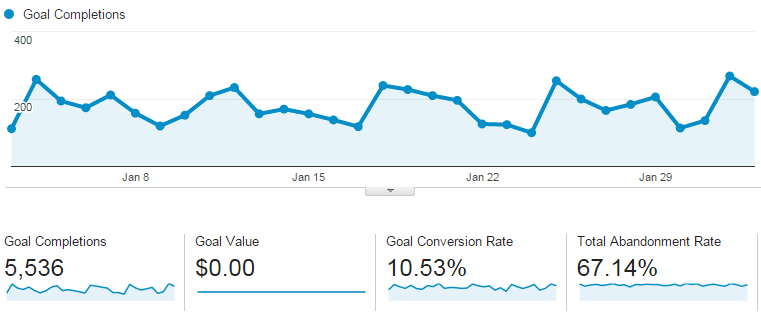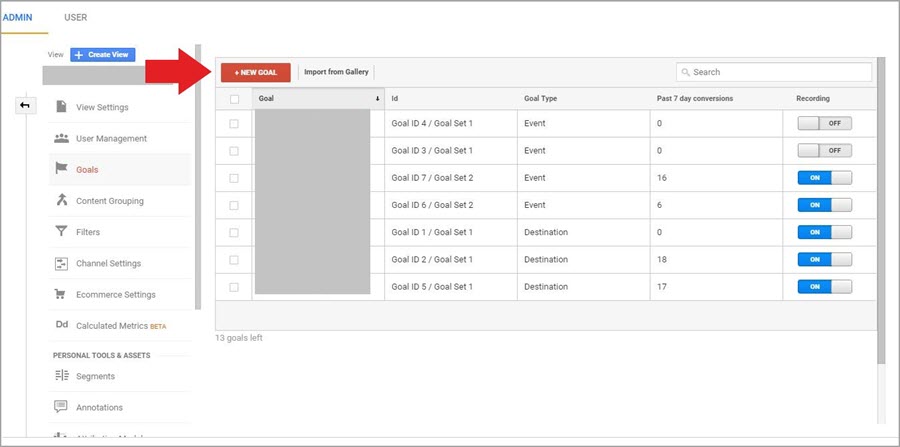What Data Is Google Analytics Goals Unable to Track: A Total Guide
What Data Is Google Analytics Goals Unable to Track: A Total Guide
Blog Article
Debunking Google Analytics Limitations: Discover What Data Goals Can not Track
In the world of electronic analytics, Google Analytics stands as an effective tool that offers useful insights right into website performance and user actions. From the ins and outs of customer interaction with vibrant material to the intricacies of cross-device user trips, these restrictions shed light on areas that might continue to be obscured from traditional analytics point of views.

User Interaction With Dynamic Web Content
User communication with vibrant material plays a crucial duty in understanding customer behavior on internet sites and optimizing the overall individual experience. Dynamic web content describes elements on a webpage that can change without the requirement for a full web page reload. This consists of interactive aspects such as pop-ups, sliders, kinds, and video clips that reply to customer activities in real-time. By tracking customer interactions with dynamic web content, web site owners can get useful understandings right into user involvement, choices, and behaviors.
Google Analytics uses various devices to track customer interactions with dynamic content, such as event tracking and virtual pageviews. Event monitoring enables you to monitor particular customer activities, like clicking a button or watching a video clip, providing data on just how customers interact with dynamic components. Online pageviews can be made use of to track communications that do not lead to a brand-new page lots, providing an extensive view of user interaction with vibrant material. By assessing this information, internet site owners can make informed decisions to enhance individual experience and drive conversions.
Cross-Device User Journeys
How can modern analytics devices track the facility paths individuals take across multiple gadgets in their on-line trips? Cross-device individual trips offer a considerable difficulty for tracking and examining individual habits properly. As individuals communicate with apps or websites using different gadgets such as smartphones, tablet computers, and desktops, it becomes critical to comprehend how they move between these platforms to maximize customer experience effectively.
Google Analytics deals with constraints in tracking cross-device customer trips as a result of privacy problems and technological restraints - what data is google analytics goals unable to track. While it can give insights into specific gadgets' interactions, tracking a smooth user journey throughout several devices remains an obstacle. This constraint can cause incomplete data and fragmented individual insights, making it challenging for businesses to create a unified sight of the client trip
To address this problem, services can use innovative analytics devices that use cross-device monitoring capabilities, allowing them to obtain a much more holistic understanding of individual actions. By leveraging these devices, businesses can link the gap in tracking cross-device customer journeys and enhance their digital approaches for a smooth individual experience.
Offline Conversions and Attribution
As services navigate the challenges of tracking cross-device customer trips, another pivotal facet to take into consideration is the realm of offline conversions and attribution in the realm of data analytics. While Google Analytics gives valuable insights right into on the internet individual behavior, it drops short when it pertains to tracking conversions that occur offline. This constraint presents a significant difficulty for services that have both online and offline sales networks.
Offline conversions, such as purchases made in physical stores or via call centers, are important to recognizing the total client trip. Without the capacity to attribute these offline conversions to specific online communications, services may battle to properly measure the impact of their digital advertising initiatives.
To address this gap, organizations can check out alternative solutions such as incorporating CRM systems with online analytics tools or using unique discount codes that can be traced back to on the internet projects. By bridging the space between online and offline data, services can obtain an extra detailed understanding of their consumers' behavior and improve their general advertising and marketing techniques.
Person Customer Recognition
In the world of information analytics, the capacity to accurately recognize specific users across numerous on the internet touchpoints is an essential difficulty for organizations seeking to personalize and enhance their advertising and marketing methods. While Google Analytics provides valuable insights into individual actions and communications, it drops brief in allowing Check Out Your URL the identification of specific people because of personal privacy problems and technical constraints. Google Analytics utilizes special identifiers such as cookies to track user sessions and behavior, yet these do not equate to recognizing individual customers in a personal feeling.

Information From Secure Pages
Despite the enhancing occurrence of safe and secure pages on sites, getting data from these encrypted sources provides a special difficulty for digital analytics platforms like Google Analytics. Secure web pages, suggested by HTTPS in the URL, encrypt data exchanged between the user's web browser and the internet site's web server to make sure privacy and safety. While this file encryption is important for securing see this page sensitive details, it likewise postures restrictions for tracking individual behavior and gathering analytics data.
Google Analytics faces challenges in gathering in-depth information from secure pages due to the security methods in location. As an outcome, certain information factors such as reference sources, keyword searches, and even some customer communications might not be fully caught when users access a web site with a secure connection. This constraint can affect the accuracy and efficiency of the data evaluation, causing spaces in understanding customer habits and choices on secure web pages.
To browse this difficulty, digital analysts may require to discover different monitoring techniques or take advantage of various other devices particularly created to collect understandings from safe and secure web pages. By adjusting techniques to suit these limitations, companies can still obtain valuable analytics regardless of the constraints presented by encrypted links.
Final Thought
Finally, Google Analytics has limitations in tracking user interaction with vibrant web content, cross-device individual journeys, offline conversions, private user identification, and information from protected web pages. These restrictions prevent a comprehensive understanding of individual habits and might result in gaps in information evaluation. Despite its useful insights, Google Analytics might not offer a full image of customer interaction across numerous touchpoints. It is crucial for organizations to be mindful of these constraints and take into consideration auxiliary devices for a much more holistic view of their data.
Individual communication with dynamic web content check here plays an important role in comprehending customer habits on websites and optimizing the total customer experience. By tracking individual communications with dynamic material, site proprietors can gain beneficial understandings into customer interaction, preferences, and habits.
Google Analytics uses one-of-a-kind identifiers such as cookies to track individual sessions and behavior, but these do not relate to determining private users in a personal sense.
As an outcome, specific information factors such as recommendation sources, keyword searches, and also some individual interactions might not be completely caught when customers access a web site via a secure connection.In verdict, Google Analytics has restrictions in tracking customer communication with vibrant web content, cross-device individual trips, offline conversions, private user identification, and information from protected pages.
Report this page